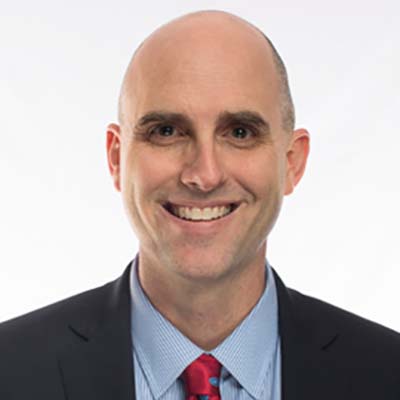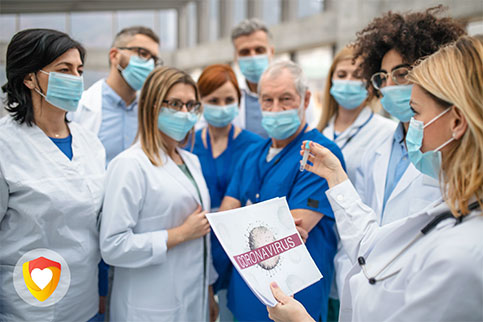As the COVID-19 pandemic ramps up, healthcare workers are understandably frightened and anxious. In the Seattle area, we’ve unfortunately been ahead of the curve in terms of the exponential spread of the virus throughout our communities, andwe’ve certainly not hit the peak yet. Fortunately, the social distancing measures enacted across the country are a sign that we, as a society, are starting to recognize the seriousness of the situation and are taking action to flatten the curve.
Perhaps the greatest concern for me and my fellow healthcare providers is protecting our families and ourselves from the disease. Providers in some areas have faced shortages of PPE that have increased the risk of infection and heightened their fears. What’s more, false rumors are circulating that healthcare providers infected with COVID-19 have higher mortality rates than the general public—which is not what the evidence shows.
When so much feels out of our control in our world, it’s essential to focus on what we can control. The good news: Science shows we can take positive steps to protect our colleagues, our families, our patients, and ourselves. Here’s a rundown of how to do that as a healthcare provider.
Use PPE appropriately
Personal protective equipment (PPE) is very effective against COVID-19. Using it correctly and consistently is one of the best ways we can avoid infection. PPE doesn’t work if you don’t wear it. While we are all likely donning PPE for patients with respiratory symptoms, some of us aren’t wearing masks and eye protection for all patients. Dr. Li Wenliang, the Chinese ophthalmologist who warned the world about COVID-19, reportedly contracted the virus from a patient he was treating for acute angle-closure glaucoma who developed a fever the next day. With community spread, we need to regard every patient as a possible source.
Guidance on PPE from hospitals and public health authorities has been changing and confusing, which has only added to the anxiety. At present, some hospitals are following CDC guidelines while others are following WHO guidelines. Fortunately, both sets of guidelines have become more closely aligned. Contact and droplet precautions with a surgical mask and eye protection are appropriate for the vast majority of patient encounters.
PPE shortages have understandably stoked fears. This is an issue being faced nationwide, as supply chains were disrupted at the same time as we began to need it in much higher quantities. Some of us have been urged to improvise PPE or reuse single-use items, and the CDC has provided guidelines for this. The good news is that private donations are bolstering supplies in hardest-hit areas. On March 25, Governor Andrew Cuomo of New York announced that his state now had sufficient PPE supplies for the next three weeks—despite being the hardest hit area in the country.
It’s also important to practice infection control with our fellow clinicians. As healthcare providers, we are all potential disease vectors. While at work, be sure to wear appropriate PPE and practice good hand hygiene at all times. Potential hot spots for disease transmission include break rooms, printers, and hand sanitizer dispensers.
Finally, we need to understand how to appropriately remove PPE. We can inadvertently infect ourselves with a dirty glove while removing masks and face shields.
Protect yourself against community spread
When it comes to fighting the pandemic, healthcare providers are our country’s most precious resource. So please do what it takes to stay well—both at work and after you leave your shift.
It’s important to recognize that we, too, are susceptible to community spread. I know several clinicians who were infected with COVID-19 outside clinical settings. One came down with the disease after attending the same meeting as another infected clinician. Others caught the disease from family members. As the pandemic worsens, community spread will increase.
So let’s commit to taking care of ourselves 24/7. When not on shift, wash your hands and avoid touching your face as if you were at the hospital, and encourage your family to do the same. Practice social distancing and minimize trips to the grocery store and other public areas.
Yes, it’s completely unfair that after practicing strict infection control all day at work, we never catch a break. However, the experience of China, Singapore, Hong Kong, and Taiwan suggests that community-based strategies like social distancing can slow the spread of the disease. The more engaged we are, the sooner life will improve for everyone.
Watch out for misinformation
One scary thing about COVID-19 is that we still know so little about it. And because nature abhors a vacuum, we humans do our best to make sense of what’s going on. In many cases, this “sense-making” process is harmless and may even serve to ease our anxiety. However, it also circulates a great deal of misinformation about the virus that isn’t backed up by science.
Misinformation running unchecked can have a chilling effect on healthcare provider morale. One example is a rumor currently circulating that providers infected with COVID-19 are more likely to die from the disease than the general public. While it’s too soon to say how things will play out in the United States, evidence from Asian countries suggests this is false. In fact, the death rate for healthcare workers in China is estimated to be less than 1%—much lower than the 3-6% mortality rate for the general population.
As health experts, we are in a strong position to correct misinformation about COVID-19 when we hear it. We can also model positive behavior by checking facts and questioning the reliability of sources.
We will get through this
One of the scariest things about working and living through a pandemic is accepting that many things are out of our control. We can’t control public policy, disaster response, supply chains, or the behavior of others.
However, for the sake of our physical and emotional well-being, we must focus on what we can control. We are not powerless against this pandemic. PPE, hygiene, and social distancing are measures that work. By taking common-sense precautions, we can slow the spread of COVID-19 while protecting ourselves and our loved ones.























